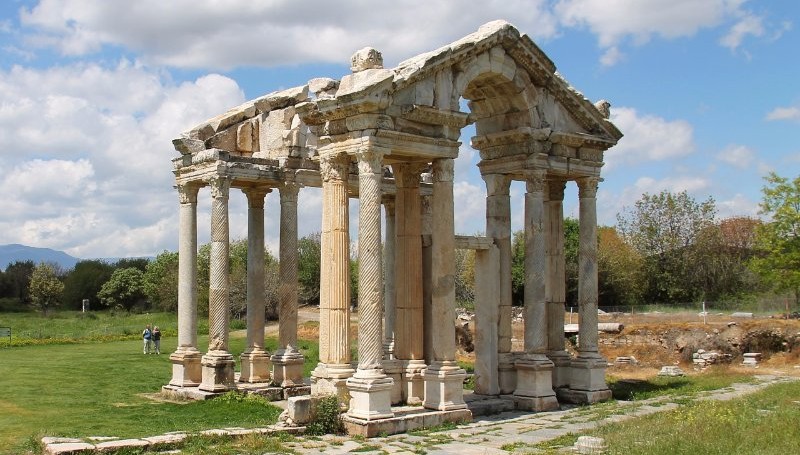Aphrodisias is in the UNESCO World Heritage List Now!
Ancient city of Aphrodisias is the 17 place located in Turkey that is listed in the UNESCO World Heritage List. It is announced that ancient city of Aphrodisias is one of the best preserved and the most important archeological places in Turkey.
Aphrodisias is from the Neolithic Age and had different names during the history such as Leleganpolis, Megapolis and Ninoi. In the Christian time it was called Stavrapolis which means The Cross city and Kayra in the Byzantium period.
It was fist called Aphrodisias in the Roman time in the 2nd Centruy BC and got its name from the Goddess of Beauty Aphrodite. Aphrodisias Temple was built in the city, the ruins of which can still be seen. Its 14 columns are still standing. Even this temple was built in the archaic period; it was renewed in the Roman time and converted into a church in the Christian time.
For sure Ancient Stadium is one of the most important structures in the ancient city of Aphrodisias. This most preserved and biggest Stadium has a capacity of 30.000 people and was used for various races, games and gladiator flights. The theatre, theatre baths, Hadrian baths, Agora, Sebasteion Monument, well-conditioned Bouleuterion Sculpture, Portico of Tiberius, Philosophy School are very important sculptures in Aphrodisias.
Tetrapylon gateway is also one of the symbol monuments in the ancient Aphrodisias. It was built in 2 AC and Tetra means 4 and pylon means gate in Greek. The exact function of this gate is not known but it is predicted that people used this gate to make ceremonies in the Temple. It was built with the marbles from Aphrodisias. The last restoration was made in 1990 and 80% of its original materials were used.
The fist excavation started in the 19th Century. Turkish Archeologist Professor Kenan Erim had an important role during tits renovation and excavations. He was buried very close to Aphrodisias after he died.
There is a museum very close to Aphrodisias where many beautiful excavations can be seen.

